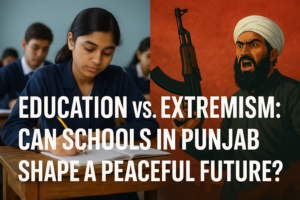Fashion choices often vary between older and younger individuals due to differences in preferences, lifestyle, societal influences, and cultural factors. Here are some general differences that may be observed.
Typically, younger people are more inclined to follow current fashion trends and experiment with new styles. They often embrace bold and unconventional fashion choices. Influenced by pop culture, social media, and celebrity fashion. They may adopt styles associated with specific subcultures.
Meanwhile, older people tend to prefer classic and timeless styles. They may prioritize comfort and practicality over following the latest trends. Influenced by personal experiences, traditional values, and a sense of refinement. They may stick to more traditional or cultural fashion norms.
Younger people are more likely to prioritize fashion trends and may endure some discomfort for the sake of style whereas older ones prioritize comfort and functionality in clothing. They may opt for more practical and relaxed styles.
As far as budget and investment in clothing are concerned, younger people are often more budget-conscious, buying trendy, affordable pieces. Fast fashion is popular among younger generations. People of high age group may be willing to invest in higher-quality, timeless pieces that last longer. They may prioritize quality over quantity.
In choosing colors and patterns, younger people are more likely to experiment with vibrant colors, bold patterns, and eclectic combinations. However, older people tend to favor more muted colors, classic patterns, and subtle combinations.
In Pakistan, people wear formal dresses on various occasions that hold cultural, religious, or social significance. The choice of formal attire is often influenced by the nature of the event. Here are some common occasions when people in Pakistan wear formal dresses
Weddings
Pakistani weddings are elaborate and festive events where both men and women wear formal attire. Women often choose heavily embellished traditional dresses, such as lehengas or ghararas, while men wear sherwanis or formal suits.
Eid Celebrations
Eid-ul-Fitr and Eid-ul-Adha are important religious festivals in Pakistan. People wear new and often formal clothes to mark the occasion. Women may opt for elegant shalwar kameez or dresses, while men wear traditional or semi-formal outfits.
Family Functions
Formal dresses are commonly worn during various family functions such as engagement ceremonies, mehndi events, and other celebrations. Women may choose traditional Pakistani dresses, and men often wear sherwanis or formal suits.
Formal Dinners and Parties
Social gatherings, formal dinners, and parties may call for formal wear. Women might choose formal Pakistani dresses, including sarees or anarkalis, while men may wear suits or traditional attire like kurta pajamas.
Religious Events
Formal attire is often worn during religious events and ceremonies. Men may wear traditional kurta pajamas or sherwanis, and women may opt for modest yet elegant dresses or shalwar kameez.
Graduation Ceremonies
Graduation ceremonies at educational institutions are considered significant events. Graduates and attendees often dress formally for the occasion. Men may wear suits, and women may choose elegant dresses or traditional attire.
Official and Business Functions
In professional settings, people often wear formal attire for official meetings, conferences, or business-related events. Men commonly wear suits, while women may choose formal western attire or traditional Pakistani dresses.
📍 English Language Educator | Blogger & Content Strategist | 7+ Years in Educational Blogging
Nosheen Bashir is a dedicated English teacher and experienced blogger with over seven years of expertise in content creation and educational writing. Passionate about language, literature, and effective communication, she combines her teaching experience with blogging skills to create insightful, research-backed content that helps learners and educators alike.
🔹 Expertise & Achievements:
✔ English Language Education: A skilled educator with years of experience in teaching English grammar, literature, and communication skills to students of varying levels.
✔ Educational Blogging: Running a successful blog for 7+ years, delivering well-structured, engaging content on language learning, writing techniques, and academic success.
✔ SEO & Content Strategy: Specializes in creating high-ranking, authoritative articles that follow Google’s EEAT principles, ensuring content that is both informative and search-friendly.
✔ Student-Centric Approach: Committed to making English easier, engaging, and accessible, helping readers and students improve their language proficiency.
🚀 With a passion for teaching and writing, Nosheen Bashir is dedicated to crafting educational content that empowers students, teachers, and language enthusiasts worldwide.




